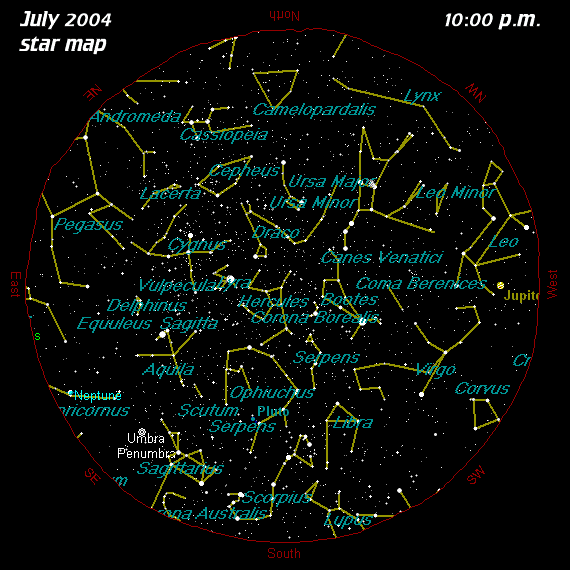



![[Moon Phases]](../moonphases/2004-07-phases.jpg) |
|---|
![]()
![[Christmas in July]](7-04-lightning-bugs.jpg) |
|---|
| Lightning bugs create a festive July Holiday portrait in my backyard in Coopersburg, PA. This four minute digital image shows grass and trees that would not be visible to the eye. The flashes of light created by the fireflies would be easily seen. Photography by Gary A. Becker... |
![[Great Summer Triangle]](7-04-great-summer-triangle.gif) |
|---|
 |
